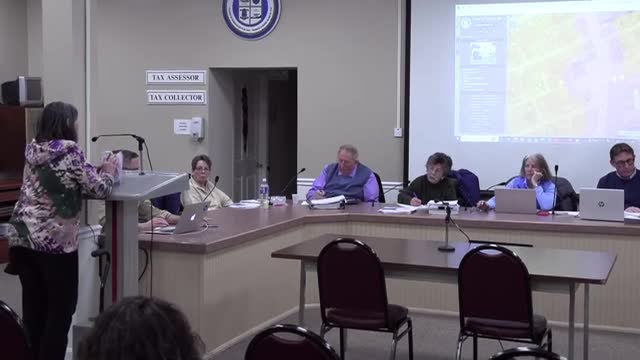Community debates industrial zoning changes in Mount Hope Bay area
February 01, 2025 | Tiverton, Newport County, Rhode Island
This article was created by AI summarizing key points discussed. AI makes mistakes, so for full details and context, please refer to the video of the full meeting. Please report any errors so we can fix them. Report an error »

On February 1, 2025, the Tiverton Planning Board convened to address critical zoning issues affecting the Waterfront District, sparking a heated discussion about industrial use classifications and their implications for local development. The meeting highlighted concerns over the potential transformation of open land and wetlands into industrial zones, raising questions about environmental impacts and community priorities.
A key point of contention arose regarding the classification of industrial uses within the zoning table. One participant emphasized that the current definitions encompass not only manufacturing but also storing, processing, and fabrication, which could lead to significant industrial activity in the area. This participant questioned the rationale behind allowing "by right" industrial uses in a district where the community has expressed a desire to limit such developments. The concern was that this could lead to unintended consequences, particularly regarding the preservation of wetlands and open spaces, as outlined in the Mount Hope Bay watershed plan.
The discussion also touched on the issue of spot zoning, with specific reference to the Hicks property, which is undergoing a split zoning change that some argue contradicts the town's commitment to environmental stewardship. The participant pointed out that while the yacht club is being protected from spot zoning, other properties are being designated for industrial use, potentially undermining the community's goals for sustainable development.
As the conversation progressed, tensions rose when board members attempted to clarify the definitions within the zoning table. The participant raised concerns about the clarity and consistency of the zoning categories, particularly regarding the distinction between industrial and commercial uses. This confusion has led to frustration among community members who fear that the current zoning framework may not adequately protect the Waterfront District from overdevelopment.
The meeting concluded with a commitment from board members to address the raised questions and clarify the zoning definitions. However, the discussions underscored a broader concern about balancing development needs with environmental protection and community values. As Tiverton navigates these complex issues, the outcomes of these discussions will likely shape the future of the Waterfront District and its surrounding areas. The Planning Board's next steps will be crucial in determining how the community's vision for sustainable development will be realized amidst growing pressures for industrial expansion.
A key point of contention arose regarding the classification of industrial uses within the zoning table. One participant emphasized that the current definitions encompass not only manufacturing but also storing, processing, and fabrication, which could lead to significant industrial activity in the area. This participant questioned the rationale behind allowing "by right" industrial uses in a district where the community has expressed a desire to limit such developments. The concern was that this could lead to unintended consequences, particularly regarding the preservation of wetlands and open spaces, as outlined in the Mount Hope Bay watershed plan.
The discussion also touched on the issue of spot zoning, with specific reference to the Hicks property, which is undergoing a split zoning change that some argue contradicts the town's commitment to environmental stewardship. The participant pointed out that while the yacht club is being protected from spot zoning, other properties are being designated for industrial use, potentially undermining the community's goals for sustainable development.
As the conversation progressed, tensions rose when board members attempted to clarify the definitions within the zoning table. The participant raised concerns about the clarity and consistency of the zoning categories, particularly regarding the distinction between industrial and commercial uses. This confusion has led to frustration among community members who fear that the current zoning framework may not adequately protect the Waterfront District from overdevelopment.
The meeting concluded with a commitment from board members to address the raised questions and clarify the zoning definitions. However, the discussions underscored a broader concern about balancing development needs with environmental protection and community values. As Tiverton navigates these complex issues, the outcomes of these discussions will likely shape the future of the Waterfront District and its surrounding areas. The Planning Board's next steps will be crucial in determining how the community's vision for sustainable development will be realized amidst growing pressures for industrial expansion.
View full meeting
This article is based on a recent meeting—watch the full video and explore the complete transcript for deeper insights into the discussion.
View full meeting